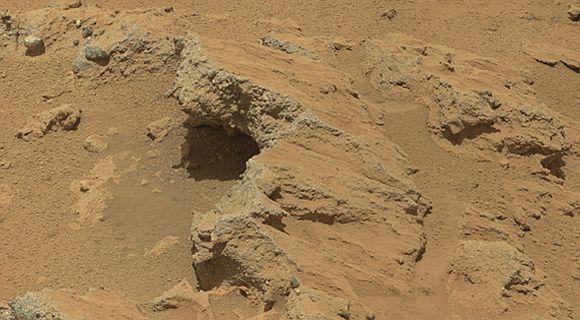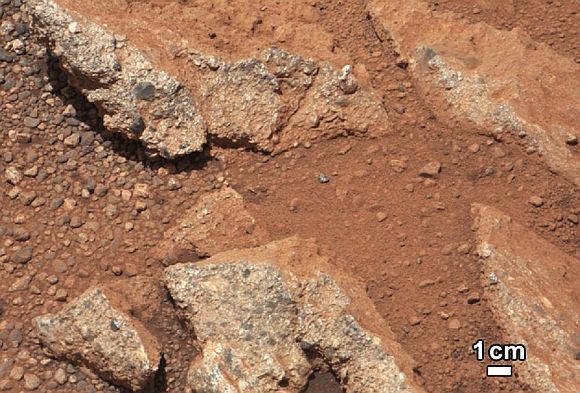 | « Back to article | Print this article |
Curiosity rover finds proof of water on Mars
NASA's Curiosity rover has found geological evidence of water which once ran vigorously across the area on Mars, after discovering gravel carried by an ancient stream on the Red planet.
There is earlier evidence for the presence of water on Mars, but the latest images of rocks containing ancient streambed gravels are the first of its kind, NASA said.
"From the size of gravels it carried, we can interpret the water was moving about 3 feet per second, with a depth somewhere between ankle and hip deep," said Curiosity science co-investigator William Dietrich from the University of California, Berkeley.
Click on NEXT to read further...
Curiosity rover finds proof of water on Mars
"This is the first time we're actually seeing water-transported gravel on Mars. This is a transition from speculation about the size of streambed material to direct observation of it," Dietrich said.
The finding site lies between the north rim of Gale Crater and the base of Mount Sharp, a mountain inside the crater.
The discovery comes from examining two outcrops, called "Hottah" and "Link," with the telephoto capability of Curiosity's mast camera during the first 40 days after landing.
Click on NEXT to read further...
Curiosity rover finds proof of water on Mars
"Hottah looks like someone jack-hammered up a slab of city sidewalk, but it's really a tilted block of an ancient streambed," said Mars Science Laboratory Project Scientist John Grotzinger of the California Institute of Technology.
"A long-flowing stream can be a habitable environment," said Grotzinger.
The imagery shows an alluvial fan of material washed down from the rim, streaked by many apparent channels, sitting uphill of the new finds.
The rounded shape of some stones in the conglomerate indicates long-distance transport from above the rim, where a channel named Peace Vallis feeds into the alluvial fan.
Click on NEXT to read further...
Curiosity rover finds proof of water on Mars
The abundance of channels in the fan between the rim and conglomerate suggests flows continued or repeated over a long time, not just once or for a few years.
"It is not our top choice as an environment for preservation of organics, though. We're still going to Mount Sharp, but this is insurance that we have already found our first potentially habitable environment," said Grotzinger.
The gravels in conglomerates at both outcrops range in size from a grain of sand to a golf ball. Some are angular, but many are rounded.
The slope of Mount Sharp in Gale Crater remains the rover's main destination. Clay and sulfate minerals detected there from orbit can be good preservers of carbon-based organic chemicals that are potential ingredients for life.



